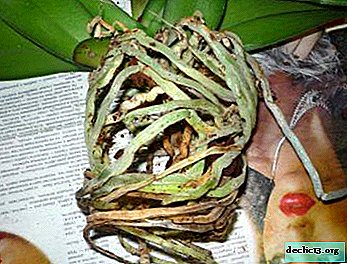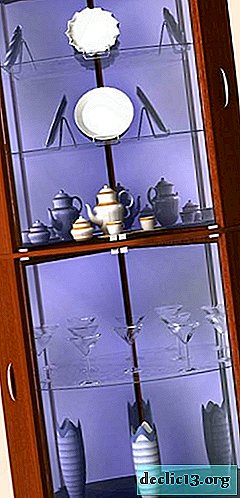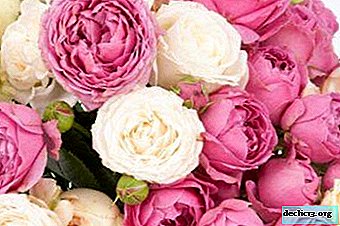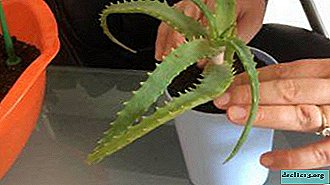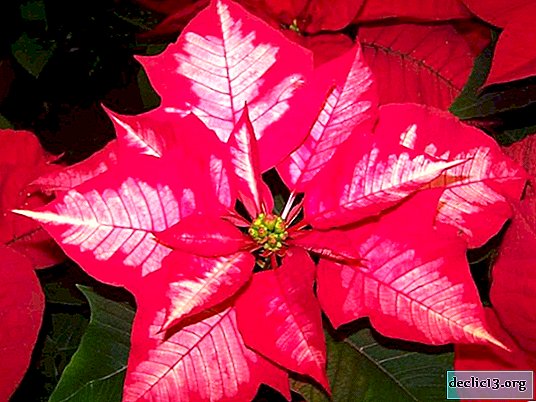Why do flowers or leaves of spathiphyllum turn black and how to help the plant?
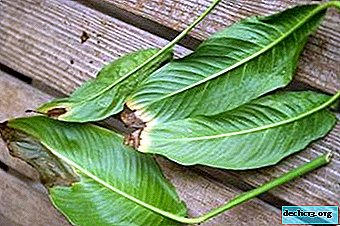
Spathiphyllum, like other representatives of the Aroid family, flower growers attract the decorative features of foliage.
He also has a beneficial effect on the energy in the house, blooms for a long time, and is resistant to diseases.
But it happens that this disease-resistant flower is influenced by negative factors.
And the consequences are reflected in the appearance of the inflorescences, because they are more sensitive than the leaves.
What is blackening?
The black color of various organs of the plant, of course, is associated with a deterioration in the health of spathiphyllum. Outwardly, blackness looks different. There may be “dry” blackness, the affected areas dry up, crumble. And also weeping blackening is a clear sign of the process of decay, when fungal spores, mold appear on top of the affected area. With a malaise of spathiphyllum, the flowers turn black: the cores and bedspread darken, the tips of the inflorescences also acquire an unhealthy dark shade.
Why is this happening?
Like it or not, but most of the ailments are associated with errors in care, which lead to such deplorable consequences. Most often, black flowers indicate problems with the root system.
Excess moisture
A moisture-loving plant should be watered regularly. The flower really prefers moist soil, but not stagnation of water.
But it is important to know that plentiful watering is established in the summer, and moderate - in the winter.Here you must not forget about the changes in fluid volumes during the changing seasons. With the constant presence of roots in a wet substrate, a process of decay occurs. Diseases are expressed by darkening of most of the leaf, a black rim along the edge of the inflorescence. Also, excess fluid may form if there is no drainage in the flower pot, which leads to fluid stagnation.
Fungal diseases
Fungal diseases are considered another reason for the defeat of the flowers, the roots of the plant are primarily affected. Especially good fungal infections develop in a moist substrate and at low air temperature. The external picture of lesions is blackness with characteristic signs of fungal intercourse. The affected part of the flower is wet, loose. Brown spots and blotches are possible. Fungal infections are also dangerous in that they spread quickly and are affected by nearby indoor plants.
Hypothermia
 Spathiphyllum is a heat-loving flower, and with drafts and a sudden drop in temperature, the foliage leans down lifelessly, the inflorescences darken. For example, this can happen when transporting indoor exotics from a store in the cold season. Or when frosty air enters the room and directly to the "female happiness".
Spathiphyllum is a heat-loving flower, and with drafts and a sudden drop in temperature, the foliage leans down lifelessly, the inflorescences darken. For example, this can happen when transporting indoor exotics from a store in the cold season. Or when frosty air enters the room and directly to the "female happiness".
If hypothermia is not significant, then the flower restores elasticity, but the black dry tips remain. Enough it is dangerous if the flower undergoes hypothermia in the wet state. The consequences of this phenomenon can be fatal.
Low humidity
High humidity for this plant is quite important. Gas exchange occurs through large leaves, a significant amount of moisture evaporates, which accordingly should be compensated by irrigation or a humid microclimate. But in an apartment, it is quite difficult to create optimal humidity parameters, especially in winter. With dry air, many ailments develop. Symptom of low humidity: the leaf itself is green, black only the tips of the leaves and the edges of the bedspread.
Illiterate use of mineral fertilizers
Often, a lack or excess of nutrients leads to blackening of the edges of the inflorescence. From time to time, the soil in which the plant grows should be renewed. After all, the soil is depleted, and the plant reacts sharply to a lack of micronutrients. It is recommended to feed indoor exot all year round..
To restore the natural balance, it is necessary to fertilize the plant with a complex of minerals, thereby protecting the flower from starvation.
However, an incorrect dosage of fertilizers or their illiterate use can provoke a blackness of inflorescences. The main thing is to carefully study the instructions on the packaging of the drug, do not increase the specified amount of minerals.Implications for “Women's Happiness”
The blackness of snow-white flowers, of course, spoils the aesthetic appearance of the plant. Of course, the owner of the spathiphyllum is saddened by this, but this is only a symptom of poor health. If on a recently still healthy plant dark spots are visible on the bedspread, blotches, black tips or roots - this is a signal to action.
It is important to determine the cause. If the fault is due to improper care, then the situation is fixable., you just have to put in order the conditions of detention. Worse, when the exot rots, the result is an infectious disease. In this case, you need to catch up on time and take emergency rescue measures, otherwise the spathiphyllum expects death. It is possible that in the later stages the whole flower will turn black, then all the actions taken are in vain.
What to do if parts of a plant darken?
When black appears on various parts of the indoor flower, inexperienced flower growers wonder how to help him. To begin with, it would be nice to exclude all possible causes and eliminate adverse factors, and then bring the consequences back to normal.
If the leaf is affected
Such a phenomenon often arises due to improperly selected irrigation regimes, in particular waterlogging. Then definitely, we need a transplant, and as soon as possible.
 Remove the spathiphyllum from the flower container.
Remove the spathiphyllum from the flower container.- Carefully inspect and feel the root system.
- Cut black, rotten roots with a previously prepared and disinfected tool.
- In the same way, eliminate blackened leaves from female happiness.
- Disinfect the slices with ground cinnamon or crushed activated carbon.
- Treat the plant with a weakly concentrated fungicide solution for prevention.
- Transplant a flower into a new soil, which contains a small amount of peat, is light, loose and rich in nutrients. Mandatory presence of a drainage layer.
- Change the pot.
- Do not water immediately after transplanting.
- The first 2-3 weeks when watering, add a few drops of Kornevin to the water to stimulate the appearance of new roots.
- In the future, normalize the irrigation system.
More detailed blackening of the leaves of spathiphyllum can be found here.
Tips only
There are many reasons for the darkening of the edges of the indoor flower. The most common among them is humidity. To get rid of this ailment should:
- normalize the temperature and humidity conditions in the room;
- regularly use a humidifier;
- spray the leaves from the spray gun daily;
- if possible, place a flower pot near the aquarium;
- put the pallet next to the flower with wet expanded clay or sand;
- to remove a flower from a cold windowsill in winter.
Spread to flowers
If the leaves began to blacken, brown spots of various forms appeared on them, possible causes: fungal diseases, in particular black rot. This disease affects all organs of the plant. Together with the foliage, the middle of the inflorescences and the edges blackens. In this case, you should act immediately.
- Move infected spathiphyllum to a separate room.
- Take the plant out of the pot, analyze the root system.
- With a sharp knife, cut off all areas damaged by rot to live tissue. Sick peduncles completely removed.
- Disinfect the sections with an antiseptic.
- Treat the plant with a 0.2% solution of the drug Fundazole or Topsin.
- Be sure to change the ground. Choose a substrate designed for Aroid.
- In the future, normalize the irrigation system and microclimate in the room.
- After 2 weeks, re-treat the flower with a fungicide.
- Move the houseplant to a place with diffused light, minimize watering for the adaptation period.
Prevention
Despite the apparent difficulties, it’s easy to care for spathiphyllum. The main thing:
 Maintain a warm, comfortable temperature in the room.
Maintain a warm, comfortable temperature in the room.- Provide high humidity in any convenient way.
- Once a week, subject to water procedures, wash the foliage with soapy water, a warm shower will also be appropriate.
- When a white coating appears on the surface of the soil in a pot, it is worth removing it. Thus, avoid soil salting.
- Monitor the condition of the soil, transplant a plant at least 1 time in 2-3 years to prevent depletion and compaction of the soil.
- Use distilled soft water to water and spray.
- Avoid excess water during irrigation.
- After 15 minutes after humidification, drain the water from the pan.
So, now you have the information for a complete recovery, further courtship, and preventive measures of your beloved spathiphyllum. Do not neglect the tips, and a beautiful exotic will delight you with long flowering and excellent views for more than one year.

 Remove the spathiphyllum from the flower container.
Remove the spathiphyllum from the flower container. Maintain a warm, comfortable temperature in the room.
Maintain a warm, comfortable temperature in the room.

